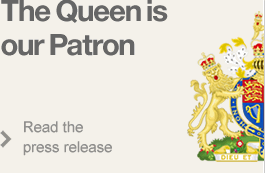
Pre Magna Carta | Post Magna Carta | Restoring Royal Authority | 2nd Barons’ War
John repudiated the terms of Magna Carta and mounted a counter-offensive with an army bolstered by large numbers of foreign mercenaries, ravaging rebel barons’ lands and driving north as far as the Scottish border. The rebel barons offered the crown of England to Prince Louis of France who invaded England. He conquered much of south-eastern England but, crucially, was unable to capture Dover castle. John died at Newark. The succession of Henry III and the reissue of Magna Carta by Regent William Marshal, deprived Louis of the support of many barons. Defeated at Lincoln and, at sea, at Sandwich, he withdrew from England in 1217.
1215 Northampton Castle (siege) | Northamptonshire
 Northampton marked the beginning of the Barons’ Wars. The rebels laid siege to the castle for two weeks but lacking siege engines moved onto Bedford and then London. Soon after the rebels left, the towns’ people attacked the castle, killing several of the garrison. In retaliation the garrison burnt part of the town. King John visited the castle over 30 times, but later gave it up, along with three others, in granting Magna Carta. Early parliaments were held there until 1380. Little now remains because of urban redevelopment, but the Friends of Northampton Castle have produced an excellent film about the site and campaign for its protection and enhancement.
Northampton marked the beginning of the Barons’ Wars. The rebels laid siege to the castle for two weeks but lacking siege engines moved onto Bedford and then London. Soon after the rebels left, the towns’ people attacked the castle, killing several of the garrison. In retaliation the garrison burnt part of the town. King John visited the castle over 30 times, but later gave it up, along with three others, in granting Magna Carta. Early parliaments were held there until 1380. Little now remains because of urban redevelopment, but the Friends of Northampton Castle have produced an excellent film about the site and campaign for its protection and enhancement.
1215 Norham Castle (siege) | Northumberland
 Norham Castle was a mighty English stronghold on a rocky outcrop on the south bank of the River Tweed. King John strengthened the castle from 1208 to 1212, and this helped it withstand a 40-day siege by Alexander II of Scotland, who had invaded northern England in support of the rebels in 1215. Now a ruin, it was built by Bishop Flambard of Durham in 1121, and being just half the river’s width away from the English and Scottish border, earned it the title of ‘the most dangerous place in England’.
Norham Castle was a mighty English stronghold on a rocky outcrop on the south bank of the River Tweed. King John strengthened the castle from 1208 to 1212, and this helped it withstand a 40-day siege by Alexander II of Scotland, who had invaded northern England in support of the rebels in 1215. Now a ruin, it was built by Bishop Flambard of Durham in 1121, and being just half the river’s width away from the English and Scottish border, earned it the title of ‘the most dangerous place in England’.
1215 Northampton Castle (siege) | Northamptonshire
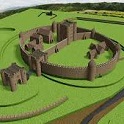 There was a second siege of Northampton Castle in 1215. It was broken by Flemish mercenaries sent by King John. When the king defeated the garrison, the castle reverted to the crown, but was later destined to be owned by the confederate barons.
There was a second siege of Northampton Castle in 1215. It was broken by Flemish mercenaries sent by King John. When the king defeated the garrison, the castle reverted to the crown, but was later destined to be owned by the confederate barons.
1215 Rochester Castle (siege) | Kent
 In 1215, Rochester Castle was garrisoned by rebel barons, and endured an epic siege by King John. Having undermined the outer walls, John used the ‘fat of 40 pigs’ to fire a mine under the keep, bringing its southern corner crashing down. The defenders held on, until they were eventually starved out after resisting for two months. Chroniclers record that the rebels had up to 140 knights, bowmen and sergeants. The high elegant towers of Rochester stand as a testimony to its history of destruction and rebuild.
In 1215, Rochester Castle was garrisoned by rebel barons, and endured an epic siege by King John. Having undermined the outer walls, John used the ‘fat of 40 pigs’ to fire a mine under the keep, bringing its southern corner crashing down. The defenders held on, until they were eventually starved out after resisting for two months. Chroniclers record that the rebels had up to 140 knights, bowmen and sergeants. The high elegant towers of Rochester stand as a testimony to its history of destruction and rebuild.
1215 Hanslope Castle (siege) | Buckinghamshire
 In the autumn of 1215 Falkes de Breauté, attacked Hanslope Castle and destroyed it, and took the manor of Hanslope. In disputes between King John and the barons, Robert Mauduit had sided with the barons. Although Robert Mauduit eventually regained the manor, the castle was never rebuilt. The Anglo Saxon name Castlethorpe meant ‘farm or secondary settlement of the castle’. Only the mound now remains.
In the autumn of 1215 Falkes de Breauté, attacked Hanslope Castle and destroyed it, and took the manor of Hanslope. In disputes between King John and the barons, Robert Mauduit had sided with the barons. Although Robert Mauduit eventually regained the manor, the castle was never rebuilt. The Anglo Saxon name Castlethorpe meant ‘farm or secondary settlement of the castle’. Only the mound now remains.
1215 Bedford Castle (siege) | Bedfordshire
 Bedford Castle was captured by Falkes de Breauté in December 1215. The castle was then in the hands of William de Beauchamp, who after the earlier siege of Northampton had let the rebels in. In return King John gave Falkes the Honour of Bedford and even the castle as well, though it is unclear whether he gave Falkes the role of castellan.
Bedford Castle was captured by Falkes de Breauté in December 1215. The castle was then in the hands of William de Beauchamp, who after the earlier siege of Northampton had let the rebels in. In return King John gave Falkes the Honour of Bedford and even the castle as well, though it is unclear whether he gave Falkes the role of castellan.
1215 Exeter Castle (siege) | Devon
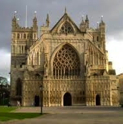 Rougemont Castle, also known as Exeter Castle, was a crown stronghold, but rebel barons captured it for a time in 1215. It was a Norman structure, but with Roman origins. It was besieged many times, and an outer bailey, of which little now remains, was added later that century. Much of the castle has been restored with public use.
Rougemont Castle, also known as Exeter Castle, was a crown stronghold, but rebel barons captured it for a time in 1215. It was a Norman structure, but with Roman origins. It was besieged many times, and an outer bailey, of which little now remains, was added later that century. Much of the castle has been restored with public use.
1215 Tonbridge Castle (siege) | Kent
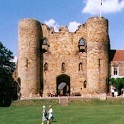 In 1215 Richard FitzGilbert’s grandson, Richard de Clare, had attended the sealing of Magna Carta. King John then attacked and seized Tonbridge Castle, but it reverted two years later. The castle was enlarged before 1100, with a squat tower. A larger stone castle was rebuilt, including the massive gatehouse which still survives. It was first built to guard the bridge crossing of the River Medway, being a simple motte-and-bailey.
In 1215 Richard FitzGilbert’s grandson, Richard de Clare, had attended the sealing of Magna Carta. King John then attacked and seized Tonbridge Castle, but it reverted two years later. The castle was enlarged before 1100, with a squat tower. A larger stone castle was rebuilt, including the massive gatehouse which still survives. It was first built to guard the bridge crossing of the River Medway, being a simple motte-and-bailey.
1215 Ely Castle (sacked) | Cambridgeshire
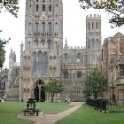 In the relentless drive northwards by King John after Magna Carta, many fortified sites were attacked. Ely Castle was said to be ‘a strong fort of lime and stone’, within the precincts of Ely, but ‘that fort being often destroyed’ was rebuilt. The castle was said to have been finally taken, and was largely destroyed by Falkes de Breauté, in 1216.
In the relentless drive northwards by King John after Magna Carta, many fortified sites were attacked. Ely Castle was said to be ‘a strong fort of lime and stone’, within the precincts of Ely, but ‘that fort being often destroyed’ was rebuilt. The castle was said to have been finally taken, and was largely destroyed by Falkes de Breauté, in 1216.
1216 Colchester Castle (siege) | Essex
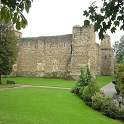 Savari de Mauléon laid siege to Colchester Castle, which has been reinforced by French troops, in January 1216. On 14 March, King John arrived outside the walls and it surrendered ten days later. Early in 1217, however, the castle was surrendered to the French and their English associates in return for a truce. The most notable surviving building of Colchester Castle is the largest Norman keep in England, far larger than the White Tower of London, which was built to a similar layout.
Savari de Mauléon laid siege to Colchester Castle, which has been reinforced by French troops, in January 1216. On 14 March, King John arrived outside the walls and it surrendered ten days later. Early in 1217, however, the castle was surrendered to the French and their English associates in return for a truce. The most notable surviving building of Colchester Castle is the largest Norman keep in England, far larger than the White Tower of London, which was built to a similar layout.
1216 Hedingham Castle (siege) | Essex
 Hedingham Castle was constructed by the de Vere family, Earls of Oxford, in the 11th century, the keep in 1130 and was endowed with the largest Norman Arch in Europe. Aubrey, 2nd Earl fought alongside Richard Coeur de Lion in Normandy, and later commanded King John’s forces in Ireland, where John had slighted the local Chieftains. On 28 March 1216, it surrendered after a three-day siege by Louis and the barons.
Hedingham Castle was constructed by the de Vere family, Earls of Oxford, in the 11th century, the keep in 1130 and was endowed with the largest Norman Arch in Europe. Aubrey, 2nd Earl fought alongside Richard Coeur de Lion in Normandy, and later commanded King John’s forces in Ireland, where John had slighted the local Chieftains. On 28 March 1216, it surrendered after a three-day siege by Louis and the barons.
1216 Windsor Castle (siege) | Berkshire
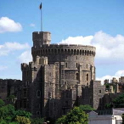 After granting Magna Carta at Runnymede, the king retired to Windsor from the capital, which was soon afterwards occupied by the barons. Hostilities, however, soon broke out again; the barons abjured their allegiance and sought help from France. The invasion of England by Louis of France, which began in May 1216, was followed by the siege of Windsor Castle. The castle was held for the king by Engelard de Cicogne, one of King John’s foreign advisors. The siege lasted from June to September and on the death of John in October it was still in the hands of his loyal adherents.
After granting Magna Carta at Runnymede, the king retired to Windsor from the capital, which was soon afterwards occupied by the barons. Hostilities, however, soon broke out again; the barons abjured their allegiance and sought help from France. The invasion of England by Louis of France, which began in May 1216, was followed by the siege of Windsor Castle. The castle was held for the king by Engelard de Cicogne, one of King John’s foreign advisors. The siege lasted from June to September and on the death of John in October it was still in the hands of his loyal adherents.
1216 Berwick Castle (stormed) | Northumberland
 In the northern reaches, King John arrived in 1216 to storm the fortified town of Berwick. On the River Tweed, the castle stood close to the borders of England and Scotland. It was founded in the 12th century by the Scottish King David I, and was fortified by Edward I before it was returned to Scotland. Berwick is now a ruined castle site.
In the northern reaches, King John arrived in 1216 to storm the fortified town of Berwick. On the River Tweed, the castle stood close to the borders of England and Scotland. It was founded in the 12th century by the Scottish King David I, and was fortified by Edward I before it was returned to Scotland. Berwick is now a ruined castle site.
1216 Barnard Castle (siege) | County Durham
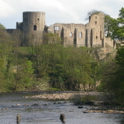 The 1216 siege of Barnard Castle in Durham was successfully resisted for King John by Hugh de Baliol against invading Scots. Leading rebel and Magna Carta surety Eustace de Vesci was killed by a crossbowman during the siege. The influence of the family enabled John Baliol, with the help of Edward I, to be crowned King of Scotland.
The 1216 siege of Barnard Castle in Durham was successfully resisted for King John by Hugh de Baliol against invading Scots. Leading rebel and Magna Carta surety Eustace de Vesci was killed by a crossbowman during the siege. The influence of the family enabled John Baliol, with the help of Edward I, to be crowned King of Scotland.
1216 Rochester Castle (siege) | Kent
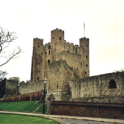 There was second siege of Rochester. The castle had not stayed in King John’s control for long. In May1216, soon after Prince Louis landed, he laid siege to the castle which fell within a week. The prince was now the new leader of the baronial faction. The castle reverted to royal control in 1217, but was by then in dire need of repair.
There was second siege of Rochester. The castle had not stayed in King John’s control for long. In May1216, soon after Prince Louis landed, he laid siege to the castle which fell within a week. The prince was now the new leader of the baronial faction. The castle reverted to royal control in 1217, but was by then in dire need of repair.
1216 Richmond Castle (siege) | North Yorkshire
 Richmond Castle was captured by Ranulph Earl of Chester in June 1216. Henry III and Edward I spent money on the site including Edward’s improvements to the keep. The castle is still in good condition for viewing with its circuit walls and the 100-foot honey-coloured sandstone keep standing to full height.
Richmond Castle was captured by Ranulph Earl of Chester in June 1216. Henry III and Edward I spent money on the site including Edward’s improvements to the keep. The castle is still in good condition for viewing with its circuit walls and the 100-foot honey-coloured sandstone keep standing to full height.
1216 Middleham Castle (siege) | North Yorkshire
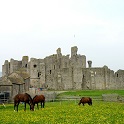 Middleham Castle was also captured by Ranulph Earl in June 1216. The castle located in Wensleydale is a compact, four-square massive structure, and the walls are intact. It has a massive Norman keep surrounded by a later curtain wall, to which were added extensive, palatial residential ranges. The castle remains an impressive ruin, and the sense of its original strength and grandeur is palpable.
Middleham Castle was also captured by Ranulph Earl in June 1216. The castle located in Wensleydale is a compact, four-square massive structure, and the walls are intact. It has a massive Norman keep surrounded by a later curtain wall, to which were added extensive, palatial residential ranges. The castle remains an impressive ruin, and the sense of its original strength and grandeur is palpable.
1216 Winchester Castles (siege) | Hampshire
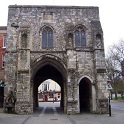 Winchester was England’s second capital and a seat of royal government with extensive walls. It also had two castles, the Royal castle to the west of which only the Great Hall survives, and Wolvesey to the east. On 6 June 1216 Louis left London to seek out John at Winchester, but he was too late as John had gone, leaving it under the command of Savaric de Mauléon. In preparing the defence de Mauléon accidentally burned down part of the town. The French marched into the city un-opposed but the two castles held out. Both were surrendered after a ten-day bombardment.
Winchester was England’s second capital and a seat of royal government with extensive walls. It also had two castles, the Royal castle to the west of which only the Great Hall survives, and Wolvesey to the east. On 6 June 1216 Louis left London to seek out John at Winchester, but he was too late as John had gone, leaving it under the command of Savaric de Mauléon. In preparing the defence de Mauléon accidentally burned down part of the town. The French marched into the city un-opposed but the two castles held out. Both were surrendered after a ten-day bombardment.
1216 Portchester Castle (siege) | Hampshire
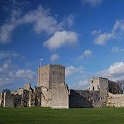 Originally a Roman fort, Portchester Castle was built in the late 11th century by William Maudit. King John often stayed at the castle when he hunted in the Forest of Bere. He was there when he heard of the loss of Normandy in 1204 and it was from here his army left England in attempts to recover Normandy in 1205 and 1213. It was besieged and captured by the French in 1216, before returning permanently to English control.
Originally a Roman fort, Portchester Castle was built in the late 11th century by William Maudit. King John often stayed at the castle when he hunted in the Forest of Bere. He was there when he heard of the loss of Normandy in 1204 and it was from here his army left England in attempts to recover Normandy in 1205 and 1213. It was besieged and captured by the French in 1216, before returning permanently to English control.
1216 Odiham Castle (siege) | Hampshire
 Odiham had been a royal residence in the 12th century, but the present castle, built by King John from 1207 onwards, was on a site to the north west of the town, beside the River Whitewater. It was built for the King to enjoy hunting in Odiham’s Royal Deer Park. John visited on 4th June 1216 and again on 9th June, meeting the Bishop of Winchester and proceeding to Windsor and Runnymede the following day. When Prince Louis laid siege to the castle, the garrison reportedly consisted only of three knights and no more than ten men-at-arms yet lasted over a week before it surrendered.
Odiham had been a royal residence in the 12th century, but the present castle, built by King John from 1207 onwards, was on a site to the north west of the town, beside the River Whitewater. It was built for the King to enjoy hunting in Odiham’s Royal Deer Park. John visited on 4th June 1216 and again on 9th June, meeting the Bishop of Winchester and proceeding to Windsor and Runnymede the following day. When Prince Louis laid siege to the castle, the garrison reportedly consisted only of three knights and no more than ten men-at-arms yet lasted over a week before it surrendered.
1216 Carlisle Castle (siege) | Cumbria
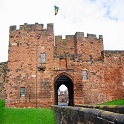 Carlisle town was captured by Alexander II of Scotland on 9 August 1216, but the castle held out considerably longer. Once it fell, Alexander held and refortified the town. It remained in Scottish hands until the following year, when it was given back to the English. Built originally for William the Conqueror it had been strengthened by his fourth son, Henry I, with the addition of a tower keep. Later extended, it also features a magnificent gateway. The castle long claims to be the most frequently besieged site in England, owing to frequent Scottish invasions, and the repeated attempts to keep the Scots out. The keep and city walls date from about 1135.
Carlisle town was captured by Alexander II of Scotland on 9 August 1216, but the castle held out considerably longer. Once it fell, Alexander held and refortified the town. It remained in Scottish hands until the following year, when it was given back to the English. Built originally for William the Conqueror it had been strengthened by his fourth son, Henry I, with the addition of a tower keep. Later extended, it also features a magnificent gateway. The castle long claims to be the most frequently besieged site in England, owing to frequent Scottish invasions, and the repeated attempts to keep the Scots out. The keep and city walls date from about 1135.
Featured Article
790 years ago, John,the King of England was having a little local difficulty with his barons. His attempts to defend his extensive dominions across the Channel, including Normandy and a considerable portion of western France, had been a disaster...
Read on...Recent Articles
- Magna Carta's American Adventure
- 800th anniversary of Bristol...
- Bristol 800 concert and...
- Emancipation and Magna Carta
- Terrorism and Tolerance -...
- Magna Carta
- Magna Carta Benches mark...
- ABA Magna Carta Memorial...
Stay updated
If you would like to keep informed about the work of the Magna Carta Trust and our partners, please sign up to the newsletter below.
Become a Supporter
There are a number of significant supporter opportunities. Register your interest early to ensure the widest range of options.
Find out more




